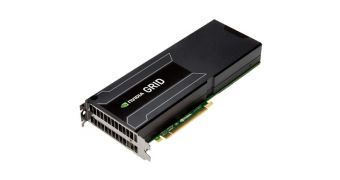Regardless of how amazing and potentially helpful a technology is, success is ultimately determined, in great part, by how well its inventor advertises it. NVIDIA has definitely been promoting GRID, and now it is showing results.
The GRID graphics processing units accelerator has been adopted by Amazon Web Services for the newly announced Amazon Elastic Compute Cloud (Amazon EC2) G2 instance.
The new service delivers, over the Internet, GPU accelerators to users running graphics-intensive applications in the cloud.
The service also mentions online gaming, the original purpose of GRID, but don't be fooled. This isn't the start of the age where games like Skyrim and Assassin's Creed are played on a server (thus allowing you to enjoy them even on a Smart TV with peripherals).
Instead, the service will allow for high-quality streaming tasks, image editing, video creation/modification, etc.
Eventually, Amazon Web Services (AWS) might start including high-quality games, but that's still a bit far off.
In other words, GRID will power resources more suited to scientists, researchers, designers and engineers (design, visualization, media creation) than gamers.
Never fear though. Now that Amazon has made this step, other software-as-a-service (SaaS) companies are bound to take a leap of faith.
GRID has been installed in the Amazon EC2 cloud. For those who want a reminder, GRID is based on Kepler architecture and includes a powerful H.264 encoding engine which compresses high-end graphics in real time, thus allowing it to be streamed to Internet-connected displays.
It's why any web-linked TV, tablet, phone, laptop and PC should be able to enjoy high-grade graphics: because it's not their hardware that needs to do the work.
"AWS sees a growing benefit for adding GPUs to our cloud," said Matt Wood, general manager of data science at AWS. "The NVIDIA GRID GPUs in our new G2 instances enable graphical applications to be rendered in the AWS cloud and streamed to a world with increasing internet bandwidth and proliferation of device types."

 14 DAY TRIAL //
14 DAY TRIAL //